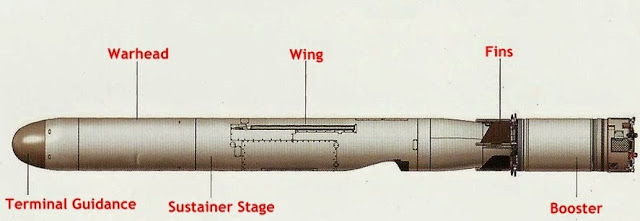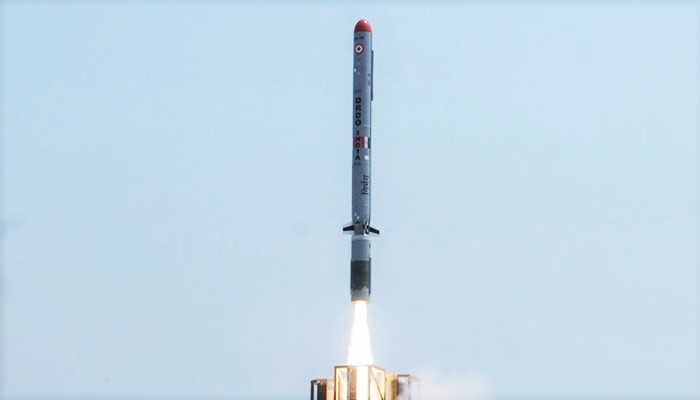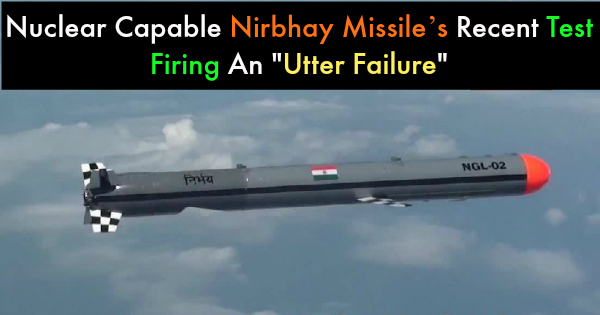India test fired Long range nuclear-capable subsonic cruise missile Nirbhay from the launch complex 3 of the Integrated Missile Test Range in Balasore, Odisha.
It was the fourth test of Nirbhay missile so far and out of four, three have ended in failure. The maiden launch was conducted in March 2013 but it was a failure, the second test was conducted in October 2014 was a big success as it had travelled 1,010 km instead of the targeted 800 km. The third mission on October 16, 2015, was again a failure. And the fourth test of yesterday again turns out to be “utter failure”.

The DRDO sources called the mission “an utter failure” because the missile started veering towards one side in the “initial phase” of the flight itself. They said, “It is a big failure. We should have a thorough re-look at what has been done so far. Out of four Nirbhay missions, three have ended in failure.”
The missile started flying beyond the safety corridor and threatened to fall on the land. So the “destruct” mechanism in its first stage was activated and the missile was destroyed.
However, any problem with the missile’s configuration has been ruled out. The test was rather “a hardware failure” that led to the mission being aborted. “This is a hardware element issue. This is a reliability issue with a component,” they explained.
A successful Nirbhay mission would have lasted for more than an hour. In a normal mission, the contraption will take off vertically like a missile, then a mechanism in its first stage will tilt the missile horizontally and the first stage, with its booster engine, will jettison into the sea. Then the second stage with the turbo engine will start cruising horizontally like an aircraft with its wings spread out at a subsonic speed of 0.7 Mach.

But during this test, the booster engine in Nirbhay’s first stage started working. The missile lifted off from its launcher. But it started veering dangerously towards one side in less than two minutes of its lift-off
The missile can take out targets 1,000 km away and can carry a 300 kg warhead.
With 4th test too ending in failure, Nirbhay missile will impact future alternation of the missile which was planned for other service wings of the armed forces – Navy and the Air Force.
But with all these tests resulting in failure, why would India need a subsonic missile like Nirbhay when it still operates supersonic BrahMos?
Well, the answer is simple. A subsonic missile travels vastly slower than a supersonic missile. Therefore, it’d take much longer to reach a target. And the efficient engine it has, compared to the supersonic missile would allow it to ‘loiter’ over a target area. In other words, once the missile is overhead and is put on a “loiter” pattern, the government can make a decision as to whether a strike still needs to be carried out or not. If they choose not to, the missile can be safely self-destructed well above the target. Also, you do not need as much fuel and therefore as much weight to strike the intended target. This means that a sub-sonic missile can either travel much farther than a supersonic one or carry more ordnance.













